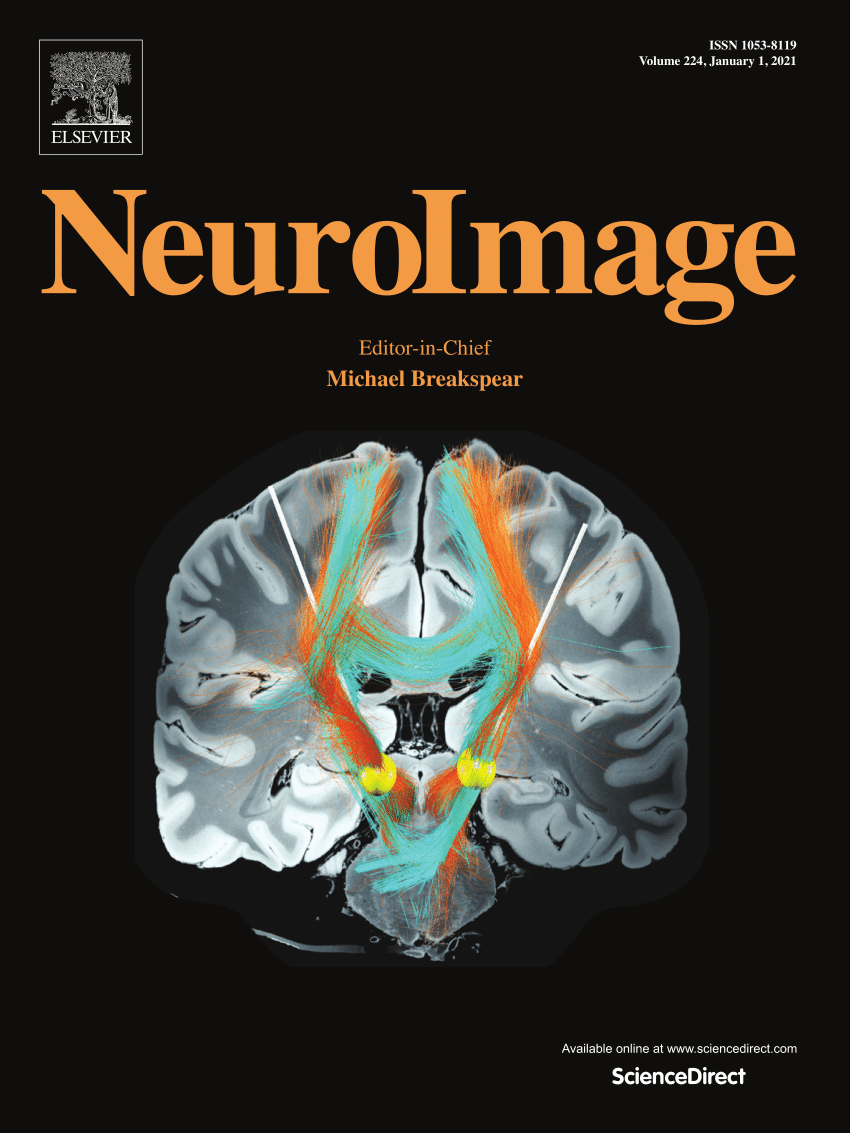Sex differences of negative emotions in adults and infants along the prefrontal-amygdaloid brain pathway
IF 4.7
2区 医学
Q1 NEUROIMAGING
引用次数: 0
Abstract
The neural basis of sex-related differences in processing negative emotions remains poorly understood. The amygdala-related fiber pathways serve as the neuroanatomical foundation for emotion processing. However, the precise sex-related variations within these pathways remain largely elusive. Using diffusion magnetic resonance imaging data from 418 healthy individuals, we identified sex differences in white-matter microstructures of the striato-amygdaloid-prefrontal tracts, particularly the amygdala (Amy)-medial prefrontal cortex (mPFC) pathway. These differences were associated with various neurobiological factors, including pain-related negative emotions, pain sensitivity, neurotransmitter receptors, and gene expressions in the human brain. Our findings suggested that the Amy-mPFC pathway may serve as a neuroanatomical foundation for sex-specific negative emotion processing, driven by specific genetic and neurotransmitter profiles. Notably, we also found similar sex differences in this pathway in an infant imaging dataset, hinting at its developmental significance as a precursor to sex differences in adulthood. These findings underscore the importance of the striato-amygdaloid-prefrontal tracts in sex-related differences in processing negative emotions. This may enhance our understanding of sex-specific emotion regulation and potentially inform future research on strategies for preventing and diagnosing emotional regulation disorders across sexes.
前额叶-杏仁核脑通路上成人和婴儿负面情绪的性别差异
人们对负面情绪处理过程中与性别有关的差异的神经基础仍然知之甚少。杏仁核相关纤维通路是情绪处理的神经解剖学基础。然而,这些通路中与性别相关的精确差异在很大程度上仍然难以捉摸。利用 418 名健康人的扩散磁共振成像数据,我们发现了纹状体-杏仁核-前额叶束,尤其是杏仁核(Amy)-内侧前额叶皮层(mPFC)通路的白质微结构的性别差异。这些差异与各种神经生物学因素有关,包括与疼痛相关的负面情绪、疼痛敏感性、神经递质受体和人脑中的基因表达。我们的研究结果表明,艾米-前脑皮质通路可能是性别特异性负性情绪处理的神经解剖学基础,由特定的遗传和神经递质特征驱动。值得注意的是,我们还在一个婴儿成像数据集中发现了该通路的类似性别差异,这暗示了它作为成年性别差异前兆的发育意义。这些发现强调了纹状体-杏仁核-前额叶束在处理负面情绪时与性别有关的差异中的重要性。这可能会加深我们对性别特异性情绪调节的理解,并为未来预防和诊断跨性别情绪调节障碍的策略研究提供潜在的信息。
本文章由计算机程序翻译,如有差异,请以英文原文为准。
求助全文
约1分钟内获得全文
求助全文
来源期刊

NeuroImage
医学-核医学
CiteScore
11.30
自引率
10.50%
发文量
809
审稿时长
63 days
期刊介绍:
NeuroImage, a Journal of Brain Function provides a vehicle for communicating important advances in acquiring, analyzing, and modelling neuroimaging data and in applying these techniques to the study of structure-function and brain-behavior relationships. Though the emphasis is on the macroscopic level of human brain organization, meso-and microscopic neuroimaging across all species will be considered if informative for understanding the aforementioned relationships.
 求助内容:
求助内容: 应助结果提醒方式:
应助结果提醒方式:


